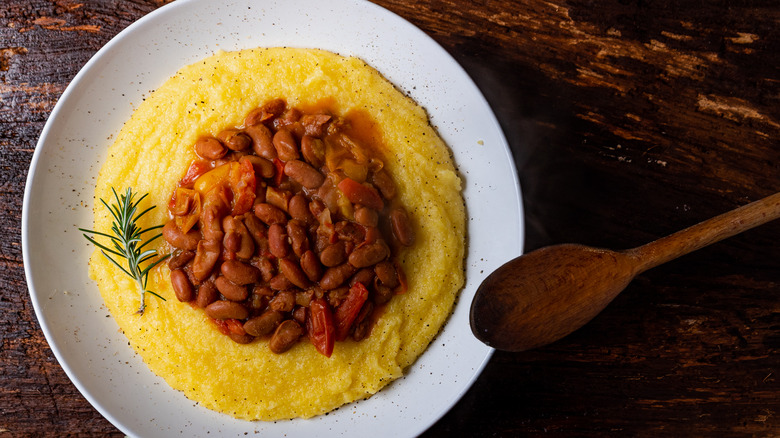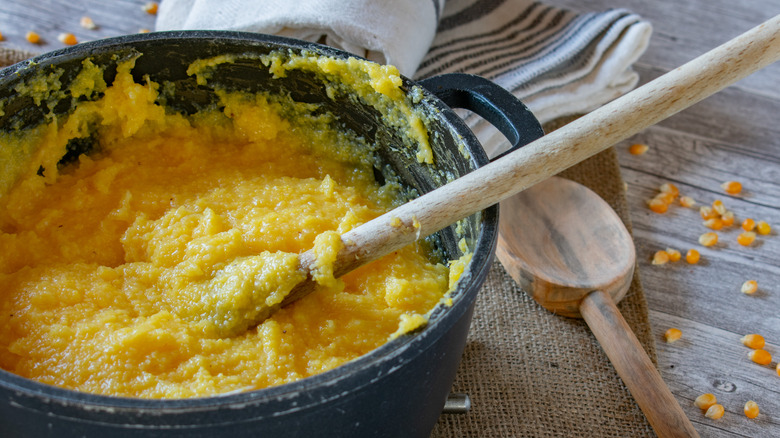The Absolute Best Way To Guarantee Creamy Polenta
You know how there are recipes that seem complicated but are actually simple? And then there are recipes that feel like they should be easy but they're not? Well, polenta is one of the latter — at least if you do it the traditional way. Like risotto, polenta is one of those recipes that requires time, attention and a lot of arm strength to get that perfect consistency.
According to Gourmet Traveler, polenta's origins date back to 16th century Italy when cornmeal it was brought back from the new world. Polenta was a simple food, originally eaten by impoverished Italians. Over the years it has become a desirable addition to fancier culinary establishments, much to the surprise of older generations of Italians. Polenta, made from cornmeal, when made well, is creamy and delicious with a kind of sweet, nutty flavor from the corn. The process to make it is arduous, but there's a hack that makes it a simple two-step process.
Turn off the stove
According to Food & Wine you can make perfect, creamy polenta without having to stand in front of the stove stirring forever. Instead, they suggest that you boil the broth and then stir the polenta in slowly off the heat, while whisking it. Then you leave it alone, and after 45 minutes the hot broth will have slowly cooked and swelled the grain. After that, all you have to do is stir in your fat and flavoring ingredients like butter or cheese.
Bon Appétit notes that not all types of cornmeal are created equal. Grits are a more coarsely ground cornmeal, while traditional polenta is a bit finer, but it's also made from flint corn that holds its shape a bit better when being cooked. Grits, which come from dent corn, are softer and more likely to lose their shape when cooking. For this reason, it's also important to use the type of polenta that your recipe calls for to get the creamiest outcome.

